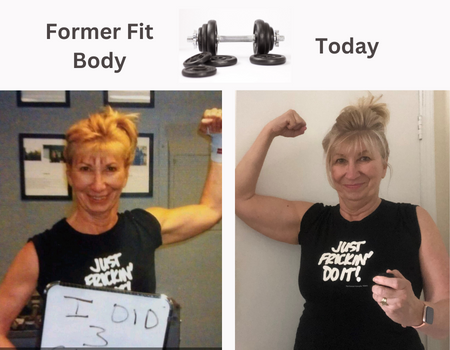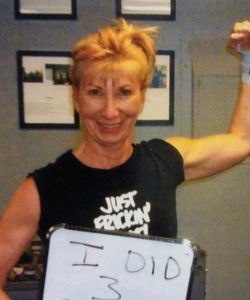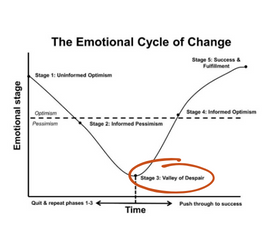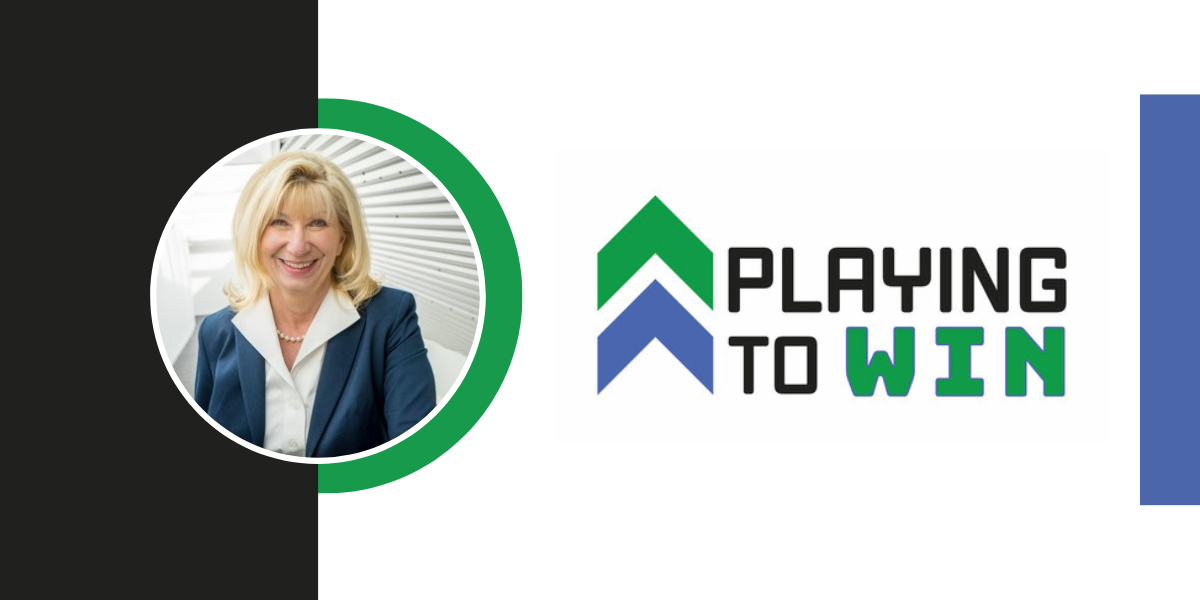I recently gave a keynote speech on the Emotional Cycle of Change, and I pointed out that many of us never get past Stage 3 (The Valley of Despair). Allow me to demonstrate using my goal of transforming my body:

The Emotional Cycle of Change
Stage 1: Uninformed Optimism
Uninformed Optimism- “Yeah! I’m going to get back to my former fit self!!”

Stage 2: Informed Pessimism
“Wow, this is harder than I thought, I have to give up food that I love, but I’m committed and will power through.”

Stage 3: The Valley of Despair
“Who am I kidding - I’m 10 years older and 25 pounds heavier, I can’t turn back time, right Cher?”

Stage 3 is where many of us give up. The pain of change has kicked in and the benefits seem just too far away. The quickest way to end the discomfort is to quit. And, if we are really clever, we tell ourselves, “I’m not quitting, this just isn’t working fast enough” and veer off and start something new, (a new diet, a new relationship, a new job, a new strategy; know what I’m talking about?) And it’s predictable that we will experience the same emotional cycles of stages 1, 2 & 3 again, (and again and again) because emotionally, this is how change works.
Now, remember I said there are 5 Stages; we just stopped, (or veered), at Stage 3 when things got uncomfortable. You see, if you get the support and help you need to Stay the Course, even when it doesn’t look like you are getting anywhere, then when you reach the Valley of Despair you will move through it into:
Stage 4: Informed Optimism: Where the benefits of your actions are starting to pay off and the cost of change is feeling worth it. The key here is not to stop but keep going. (I’ll talk more about this next week and what I tend to do when I get to 80% of a goal)
Stage 5: Success and Fulfillment: The final stage; here the benefits of your new behaviors are fully experienced and the cost of change now feels worth it. The actions that were once difficult and uncomfortable are now routine.

The point of this is we all have a Thinking Brain & Emotional Brain. The Thinking Brain decides that we want to make a change AND, the Emotional Brain, depending on what the change is or what we’ve done in the past, may or may not cooperate. Then we veer, give up, and repeat the pattern again (again and again.)
In future blogs, we will continue exploring how to have both our Thinking Brain and Emotional Brain Playing to Win Together. Stay tuned!

